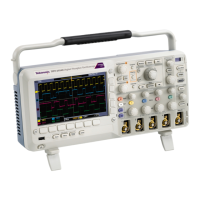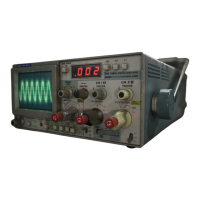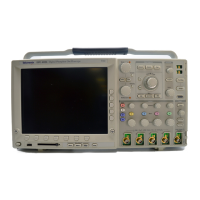Oscilloscope Reference Spectral math phase controls
peak of the lobe. The bandwidth in hertz may be computed by dividing the BW in bins by the gate duration
in seconds. This is also referred to as resolution bandwidth (RBW).
Coherent gain
The gain fact
or normally associated with different window functions is correctly scaled into the magnitude
spectrum output. Therefore, the magnitudes in the output spectrum do not change as different windows
are s elected.
Scallop loss
This is the magnitude error of the spectral analyzer when the frequency of the observed signal is exactly
half way between two frequency samples of the spectrum when the interpolation ratio due to zero fill of the
FFT is one. When zero fill is in effect, scallop loss is essentially eliminated because of the interpolation in
the freq
uency domain due to zero fill. If you w ork with span settings less than full and you work with
larger resolution bandwidth settings, zero fill is in effect most of the time.
Nearest side lobe
This is the difference in magnitude between the spectral lobe peak in the spectrum and the next side lobe
that occurs due to energy leakage. Different windows have different leakage characteristics. The more
n
arrow the resolution bandwidth of the window the more leakage in the spectrum.
Zero phase reference
This is the position in the time domain gate that is the reference point for phase in the output spectrum.
That is, if a sine wave input has its peak at the zero phase reference position, then it reads out as zero phase
in the s pectrum. If the phase is to be correct when doing impulse response testing, the impulse in the time
domain must be located at this position in the gate interval.
770 DSA/DPO70000D, MSO/DPO/DSA70000C, DPO7000C, and MSO/DPO5000 Series
